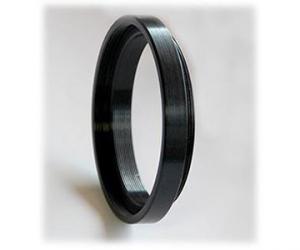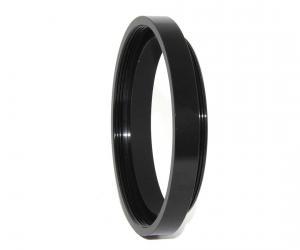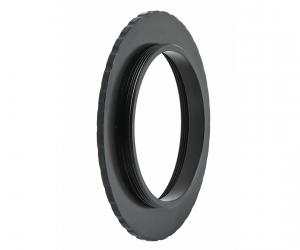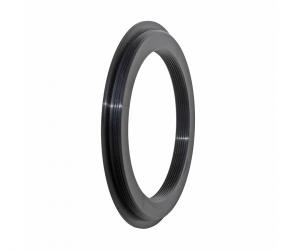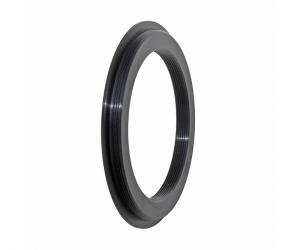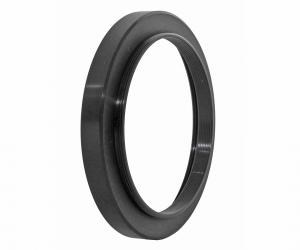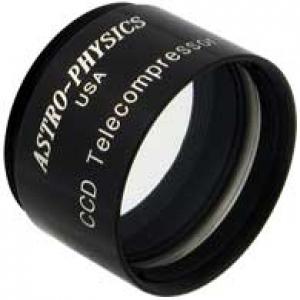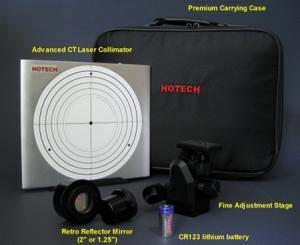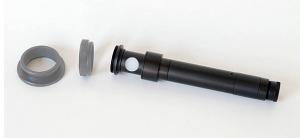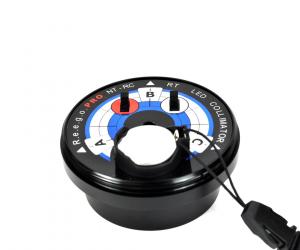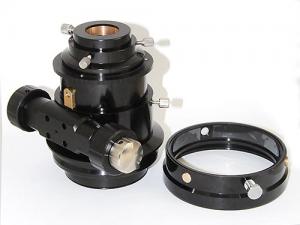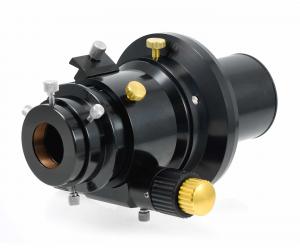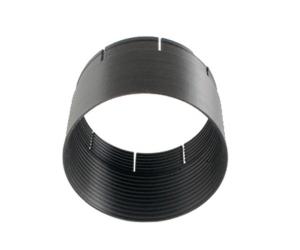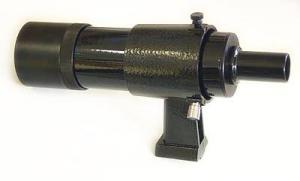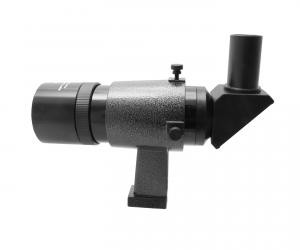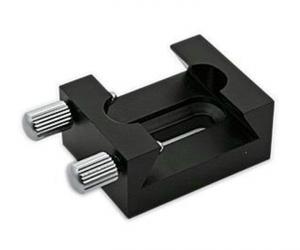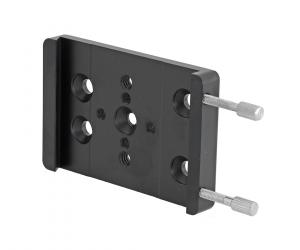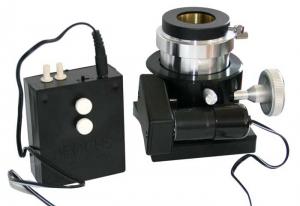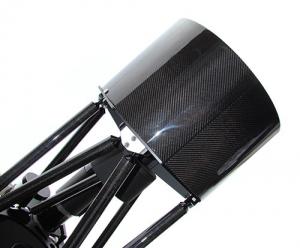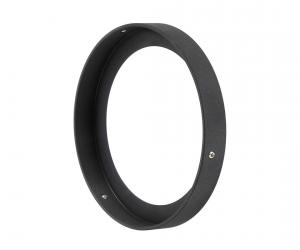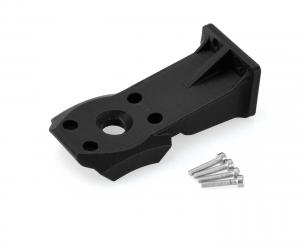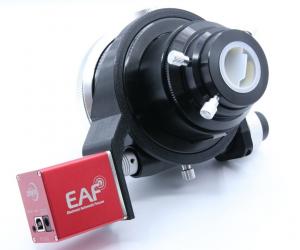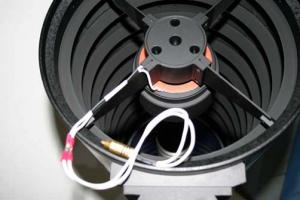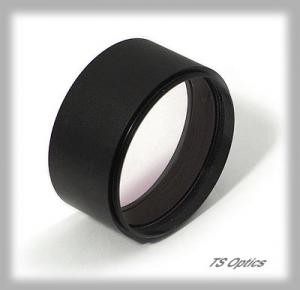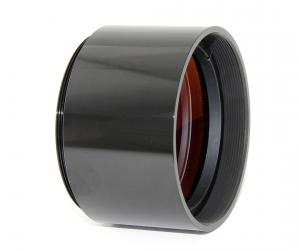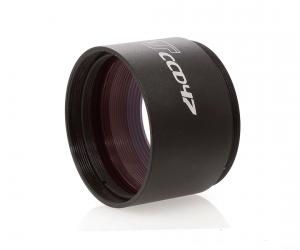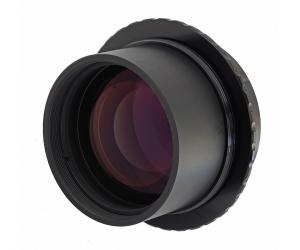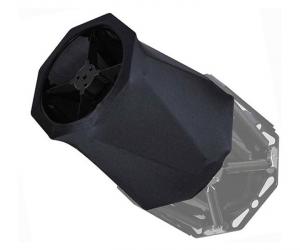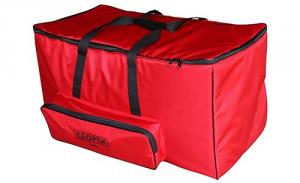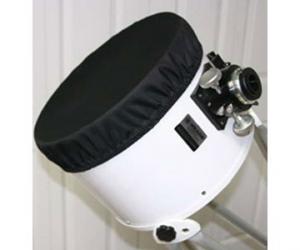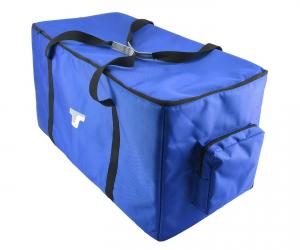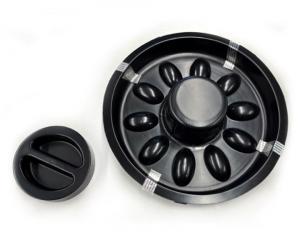- Telescopes
- Overview:
Telescopes - Achromatic Refractor
- Apochromatic Refractor
- Overview:
Apochromatic Refractor - ED Refractor - less color aberration than an achromatic
- SD APO - color free 2-element APO objective
- EDT APO - 3 element ED objective
- High End APO with 3-element APO objective - no color aberation
- Flatfield APO with flat field for Astrophotography
- All Apos and EDs from all manufacturers - large overview
- TS APO and ED from Japan with high quality optics
- Overview:
- Newtonian Telescopes
- Dobsonian Telescopes
- RC Ritchey Chretien Telescopes
- Casssegrain Telescopes
- Reflektor Telescopce with Lens Correcture
- Maksutov Cassegrain Telescopes
- GoTo Telescopes
- Solar Telescopes H-Alpha
- Overview:
- Mounts Tripods Rings Rails Power Supply ...
- Overview:
Mounts Tripods Rings Rails Power Supply ... - Mounts Equatorial with GoTo
- Mounts Equatorial without GoTo
- Mounts Azimutal with GoTo
- Mounts Azimutal without GoTo
- Mounts GoTo - Harmonic Drive
- Travel mounts for astro imaging
- Tripods Piers Polar Wedges
- Mount Control & Electronics
- Dovetail Clamps, Plates and Mount Adapters
- Tube Rings
- Power Supply
- Counterweights Balance Weights
- Mount Accessories - Other
- Overview:
- Telescope Accessories
- Overview:
Telescope Accessories - Eyepieces
- Barlows & Reducer Lenses
- Diagonal Mirrors and Prisms
- Binocular Viewers
- Finder Scopes
- Telescope Collimation and Test
- Cleaning Tools
- Transport and Storage
- Dust protection for Telescopes & Accessories
- Stray Light Protection
- Dewcaps and Heater
- Focusers, Adapters, Motorfocus
- Telescope DIY & Improvement
- Other telescope accessories
- Replacement Parts
- Overview:
- Filters
- Overview:
Filters - Color Filters and Color Filtersets
- Nebular Filters for Visual Observing
- Neutral-Density and Polfilter
- Photo Narrowband Nebular Filters
- Photo Broadband Filters
- Photo Planetary Filters
- Photo R-G-B and IR Cut Filters
- Photo - Filtersets
- Photometric Filters
- Clip Filter for DSLR Cameras
- Filter Wheels and Filterslider
- Solar Filters for white light
- Solarfilter for H-Alpha and Calcium
- Overview:
- Adaptors
- Overview:
Adaptors - Adapter 1,25" and 24,5mm
- Adapter 2"
- Adapter T2 - M42x0.75
- Adapter M48x0,75
- Adapter M54
- Adapter SC
- Adapter M63
- Adapter M68
- Adapter to other Threads
- Adapter Extensions
- Adapter camera bayonet
- Adapter Objective Filterthread
- Adapter Quick Changing , Rotation
- Adapter Eyepiece Projection
- Adapters Tilting
- Overview:
- Astrophotography and Photography
- Overview:
Astrophotography and Photography - Cooled Cameras
- Cameras without Cooling
- Deep-Sky Cameras uncooled
- Set-Offers Camera, Filter, Wheels
- Acessories for Cameras
- Travel mounts for astro imaging
- Imaging Correctors for Telescopes
- Autoguiding Cameras & Sets
- Everything for Guiding
- Focusing aids - Bahtinov mascs
- Flat Field foils and boxes
- Lenses for Cameras
- Piggyback Camera Holder
- Camera Bags, Photocases & more
- Digital Camera and Smartphone Adapter
- Other photo accessories
- Overview:
- Binoculars, Spotting Scopes, Microscopes, Range Finders
- Overview:
Binoculars, Spotting Scopes, Microscopes, Range Finders - Spotting Scopes and Acessories
- Roof Prism Binoculars
- Binoculars with Porro prisms
- Binoculars from 100mm Aperture
- Binoculars with 1,25 inch eyepieces
- TSMX APO Binoculars
- Binoculars for Astronomy
- Binoculars Hiking Bird watching
- Monoculars - Opera Binoculars
- Accessories for Binoculars
- Range Finders
- Microscopy
- Bags for Phototripods & Binoculars
- Overview:
- Phototripods and Binomounts
- Books, Software
- Overview:
Books, Software - Books for Astronomy Beginners
- Star Charts and Planispheres
- Books about our Solar System
- Observing Tips for Amateurs
- Popular Astronomy Literature
- Teaching material
- Astrophotography books
- Telescopes, Observatories, Construction
- Calendars Yearbooks
- Software, Star Charts
- Books for Microscopers
- Books Nature and Animals
- Nature Photography TimeLapse
- Overview:
- Night Vision, Magnifiers, Weather, Domes & more
- Beginner Astronomy and Gift Ideas
- Second Hand & Special Offers
- New products
Manufacturer: -TS Teleskope
Product number: TSRC10T
EUR2990.00new
EUR 2.990,00RRP EUR 3.499,00you save 14.5% (EUR 509,00)
incl. 19 % VAT (DE)
The VAT indicated refers to that applicable in Germany. After logging in, the VAT amount is adjusted to the applicable VAT of the stored delivery country. Therefore, the final price may vary accordingly.
excl. 45.95 € shipping costs (DE)
more details to the shipping costs ...Please log in to calculate shipping costs to your country.
There are no reviews for this product
- Details..
- Technical data..
- In the box..
- Reviews..
- Download..
- Manufacturer infos..
- Safety informations..
TS-Optics GSO 10" f/8 RC Ritchey-Chrétien Telescope with Carbon Tube
Most large professional telescope are constructed according to the RC principle. Until recently, these telescopes were unaffordable for amateurs. RC telescopes from Teleskop-Service are primarily aimed to amateur astronomers with photographic interest. These telescopes are perfectly suited for high-resolution astrophotography. Of course, an RC can also be used for visual observing. Here, the large corrected field of view is noticeable, too. In total, the stars are sharper than, for example, in a Schmidt-Cassegrain.The advantages of the TS-Optics RC Telescopes at a glance:
Astrophotography with the RC telescope:
Due to the large corrected field of view, you can, for example, use a DSLR up to APS-C format without corrector. Thus the RC is a pure mirror system for astrophotography. The images become ultrasharp. For imaging dirctly in the focus, you will need the M117x1 extension tubes which are supplied. They are threaded between telescope and focuser, thus reducing back-focus.The generous back-focus also allows attaching correctors which we recommend when using sensors of at least full-frame size. You can also attach a focal reducer, thus further increasing the speed of the RC.
You can connect the camera via 2" receptacle or thread it via the M77x0.75 female thread on the extension tube and M74x0.75 male thread of the focuser. Suitable adapters can be found in the accessories section.
Astrophotographic results obtained with this telescope on Astrobin
The RC telescopes are very well suited for astrophotography. Here you can find some astrophotographs made with this telescope model: Link to Astrobin
0.67x CCD reducer for astrophotography
The CCD47 improves the focal ratio from f/8 to f/5.36, thus reducing the exposure time to less than 50%. With this, you can capture dim nebulae and galaxies with moderate exposure times.The advantages of a carbon tube over a metal tube:
The weight reduction is minimal - only about 500 grams - the main advantage ist the focus stability when temperature changes. That is important for astrophotography. When temperatures drop, metal contracts and the focus moves. Refocusing is necessary. A carbon tube does not change, the combination of quartz glass mirror and carbon composite tube makes a readjustment of the sharpness obsolete, even for long time exposures. The Carbon Fiber Truss Tube Design:
The Carbon Fiber Truss Tube Design:Lightweight yet strong carbon fiber truss tubes have low thermal expansion characteristics. Shifts in focus due to temperature changes are minimized because of this design. The trusses are also designed to flex equally, keeping the optics in collimation regardless of the position of the telescope.
The 3" M-LRN Monorail Focuser

The 3" Monorail focuser is a further development of the Crayford design. The load is not carried by four (often underdimensioned) ball bearings, but on a stainless steel track on the base, thus preventing tilting and bending even under high loads. It is countered by a big knurled screw that centers the inner tube exactly to the rail. The load is distributed evely across the rail´s surface.
Technical details of the focuser:
Primary and secondary mirror of quartz glass with 94% enhanced reflectivity:
Quartz glass does not change its dimensions if temperature changes. When the temperature changes slowly during an exposure, other mirror substrates, like Pyrex, tend to a deformation of the mirror and thus to a shift of the focus. This problem does not exist for mirrors of quartz glass. Thus the focus is better maintained which is very important for long exposures. Both mirrors are coated with 94% reflectivity. The image is obviously brighter than the one of telescopes with only 90% reflection layer.The advantages of TS RC telescopes for astrophotography:
The TS RC astrographs are true Ritchey-Chrétien telescopes. Maksutovs and Schmidt-Cassegrains have spherical mirrors and need correctors for making a large field usable. With Schmidt-Cassegrains, you can see the aberrations in the field even when working visually. Most times, Maksutov-Cassegrains are so slow that they are not suitable for astrophotography. RC telescopes have hyperbolical primary and secondary mirrors. They are more difficult to manufacture, but offer a significantly sharper field with less aberrations throughout the field.Why is the RC Telescope superior to Schmidt-Cassegrain telescopes with correctors:
Celestron EHD or Meade ACF telescopes need a corrector. Additionally, these telescopes have a Schmidt plate at the front side which is prone to dew. The RC is a pure reflection system without lenses in the light path. Thus you can use the complete light even in the infrared range. The image is brighter and the exposure times get shorter. The field of an RC telescope is coma-free by design and relatively flat.No shifting problem with TS RC telescopes:
Telescopes with focusing via movable primary mirror often suffer from the shifting problem. The image shifts while focusing or even jumps. By now, Meade and Celestron have the problem under control, but the effect is noticable nonetheless. TS RC telescopes do not have this problem, as their primary mirror is fixed. Focusing is done via a high-quality focuser. An additional advantage is the optimal distance from primary to secondary mirror. This gives you the guarantee of the best possible image. If the primary mirror moves relatively to the secondary, you will practically never have the optimal distance.Adjusting the RC telescope
We recommend the TSRCKOLLI or an collimating telescope for adjusting the telescope. These tools are linked in the "Cleaning & Collimating" section.Video with information about RC telescopes
On our YouTube account you will find a video about the characteristics of the Ritchey-Chrétien telescopes in general and the features of the GSO RCs in particular, as well as suggestions for accessories:| Optical Design: | True RC with a hyperbolic primary and secondary mirror. |
| Aperture: | 10" / 250 mm |
| Focal Length: | 2000 mm |
| Focal Ratio: | f/8 |
| Mirror material: | low thermal expansion quartz glass primary and secondary mirrors |
| Reflectivity: | 94% enhanced reflectivity |
| Back Focus: | 210mm from the male M117x1 thread on the tube |
| Resolution: | 0.46" |
| Tube: | Carbon Truss Tube with 2x dovetails - Losmandy style |
| Tube Weight: | 16.5 kg included focuser |
| Weight of the focuser: | 1 kg |
| Tube Diameter: | ca. 420 mm |
| Focuser: | 3" M-LRN Monorail focuser with micro transmission and 5 kg load capacity. |
| Connection at eyepiece side: | 2" and 1.25" |
| Additional threads: | M77x0.75 female thread on the extension tube and M74x0.75 male thread |
| Working distance from the 2" plug-in sleeve: | 131 mm |
| Working distance from the M117x1 thread on the tube: | 226 mm |
Astrophotographic results obtained with this telescope on Astrobin
The RC telescopes are very well suited for astrophotography. Here you can find some astrophotographs made with this telescope model: Link to AstrobinImages by a customer
Our customer Mario König has taken some great pictures with this telescope, and we are happy to show two of them here as examples: Object: LBN 511
Object: LBN 511Photographer: Mario König (Germany)
Telescope: TS-Optics GSO 10" f/8 Ritchey-Chrétien telescope (TSRC10T)
Camera: Omegon Pro veTEC 571 C (OM67320)
Exposure time: 78x 120 s
Guiding: 50 mm finder scope
Mount: Skywatcher EQ6-R PRO (EQ6-R)
 Object: NGC 7023 (Iris Nebula)
Object: NGC 7023 (Iris Nebula)Photographer: Mario König (Germany)
Telescope: TS-Optics GSO 10" f/8 Ritchey-Chrétien telescope (TSRC10T)
Camera: Omegon Pro veTEC 571 C (OM67320)
Guiding: 50 mm finder scope
Mount: Skywatcher EQ6-R PRO (EQ6-R)
Image by another customer
Our customer Georg Wöber from Austria used this telescope, set up in a remote observatory in Namibia, to capture a beautiful picture in the red range of the spectrum: Object: Messier 16 (Eagle Nebula)
Object: Messier 16 (Eagle Nebula)Photographer: Georg Wöber (Austria)
Telescope: TS-Optics GSO 10" f/8 Ritchey-Chrétien telescope (TSRC10T)
Camera: ZWO ASI2600MM Pro (ASI2600MM-P)
Total exposure time: 20 hours
Mount: 10Micron GM1000 HPS (BA1451000)
| Manufacturer / Importeur: | Teleskop-Service Ransburg GmbH |
| Street: | Von-Myra-Str. 8 |
| ZIP / City: | 85599 Parsdorf |
| Country: | germany |
| Telefon number: | +49 89 99228750 |
| Email: | info@teleskop-service.de |
| Website: | www.teleskop-express.de |
Safety informations: PDF Download
Recommended accessories
Adaptors
Barlow, Corrector, Reducer
Cleaning & Collimating
Customers who bought this product also bought...
Finder & Accessories
TS-Optics 8x50 Finder - straight view, black colour and with adjustable bracket
EUR 69,00RRP EUR 89,00you save 22.5% (EUR 20,00)
TS-Optics 8x50 Finder - with Bracket - black colour - 90° angled
EUR 98,00RRP EUR 109,00you save 10.1% (EUR 11,00)
TS-Optics FDA Accessory Clamp for Losmandy Style Dovetail Bars
EUR 29,90RRP EUR 33,00you save 9.4% (EUR 3,10)
General Accessories
Rigel nFocus Motorfckus for GSOl 2" and 3" Focusers
EUR 149,00RRP EUR 185,00you save 19.5% (EUR 36,00)
Astroprints mounting kit for ZWO EAF motor focus on Monorail 3" focuser, Gen II
EUR 80,00RRP EUR 89,90you save 11% (EUR 9,90)
ZWO EAF focus motor with USB-C connection for power supply and data transfer
EUR 239,00RRP EUR 257,00you save 7% (EUR 18,00)
Photo Acessories
Transport & Covers
Astrozap Light Shroud for 10" RC TRUSS Telescopes from TS, Astrotec, GSO ...
EUR 149,00RRP EUR 165,00you save 9.7% (EUR 16,00)
TS-Optics Transport Bag for 10" and 11" Schmidt-Cassegrain & 10" RC Telescopes
EUR 119,98RRP EUR 139,00you save 13.7% (EUR 19,02)
Reviews
Written by Thomas Mader
on 2023-04-18
"Hochwertiges Teleskop, erstklassig verarbeitet. Sehr gut für fortgeschrittene Nutzer."
Written by Thomas Mader
on 2023-03-27
Sehr gut verarbeitetes Gerät mit hoher optischer Leistung und kontrastreicher Optik. Bin begeistert.











